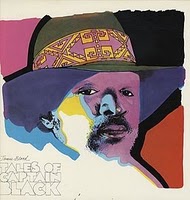 “HOLY CRAP!” is a good summary of my reaction to Tales of Captain Black. If you ever wanted to hear a Jazz album that could match…make that surpass Captain Beefheart’s Trout Mask Replica then this is it. It’s a Free-Jazz-Post-Punk-Polka-Funk-Blues merry-go-round, pushing the limits of any music listener’s tolerance levels. The most famous member of the band is certainly Ornette Coleman. He’s great company for James Blood Ulmer. You can hear briefly from time to time that Ulmer is a great Blues guitarist as well, when he’s not being a demon. Bassist Jamaaladeen Tacuma books it at light speed. And Denardo Coleman’s performance makes me wonder if anyone has ever recorded the drumming tracks for an album by mounting a small drum kit to a horse, having their beats thrown off by galloping and bucking of freaked-out horse as they rode it around the studio. That would be pretty “Free-Jazz” of them. –Rob
“HOLY CRAP!” is a good summary of my reaction to Tales of Captain Black. If you ever wanted to hear a Jazz album that could match…make that surpass Captain Beefheart’s Trout Mask Replica then this is it. It’s a Free-Jazz-Post-Punk-Polka-Funk-Blues merry-go-round, pushing the limits of any music listener’s tolerance levels. The most famous member of the band is certainly Ornette Coleman. He’s great company for James Blood Ulmer. You can hear briefly from time to time that Ulmer is a great Blues guitarist as well, when he’s not being a demon. Bassist Jamaaladeen Tacuma books it at light speed. And Denardo Coleman’s performance makes me wonder if anyone has ever recorded the drumming tracks for an album by mounting a small drum kit to a horse, having their beats thrown off by galloping and bucking of freaked-out horse as they rode it around the studio. That would be pretty “Free-Jazz” of them. –Rob
Album Reviews
The Clash “The Clash” (1977)
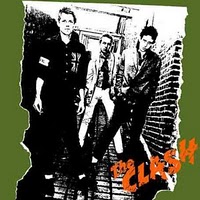 While London Calling is often hailed as the finest effort by these guys, my tastes has always made me favor their debut above the rest. It really stands out as the best representation of what the Clash were capable of and why at one point, they were considered the only band that mattered. Unlike London Calling, there isn’t a single bad song within the bunch. On this particular release (US version – which in my opinion is a more improved edition of the UK release) you get punk classics such as: “Clash City Rockers,” “I’m So Bored With the USA,” “White Man in Hammersmith Palais” (which just might be my favorite Clash song), “London’s Burning,” “I Fought the Law,” “Janie Jones,” and so on. Every last song is a stone cold classic and it just sounds so exciting no matter how many times it has been played. This is about as good as it get’s when referring to punk rock and it has my vote as the finest from the “Brit-punk” era. Actually, make that from any era. Highly recommended to everyone and it’s pretty damn close to being my all-time favorite record. –Jason
While London Calling is often hailed as the finest effort by these guys, my tastes has always made me favor their debut above the rest. It really stands out as the best representation of what the Clash were capable of and why at one point, they were considered the only band that mattered. Unlike London Calling, there isn’t a single bad song within the bunch. On this particular release (US version – which in my opinion is a more improved edition of the UK release) you get punk classics such as: “Clash City Rockers,” “I’m So Bored With the USA,” “White Man in Hammersmith Palais” (which just might be my favorite Clash song), “London’s Burning,” “I Fought the Law,” “Janie Jones,” and so on. Every last song is a stone cold classic and it just sounds so exciting no matter how many times it has been played. This is about as good as it get’s when referring to punk rock and it has my vote as the finest from the “Brit-punk” era. Actually, make that from any era. Highly recommended to everyone and it’s pretty damn close to being my all-time favorite record. –Jason
Shuggie Otis “Inspiration Information” (1974)
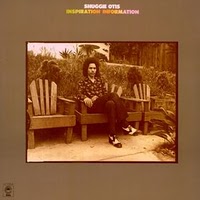 This is the ultimate soul-chill album. Shuggie is extremely versatile and this album exploits that ability. He might take you through a blaxploitation-era-sounding L.A. street walk as in the opener and “Strawberry 23”, a dub-influenced Hammond organ tune in “Aht uh Mi Head”. “Happy House” almost sounds like a millennial drum and bass piece. “Sweet Thang” might be one of the best soul jams on a blues number I’ve ever heard (here he’s successfully aped Duane Allman on guitar). He tries for some experimental stuff on his beat machine but the songs that shine are when he allows his guitar to create the atmosphere. Shuggie’s excellence is extremely subtle due in part to his highly laxed and soft vocal style and his tendency towards quiet groove. But this IS a 2am come down lazy groove album in the best sense. Don’t give up on the album in the middle instrumental section which drops off, as the album’s second half picks up starting with “Strawberry 23”. The high point of the album is the groove he kicks on the second half of “Island Letter”. All this, and the fact that Otis was practically a toddler when he made Inspiration Information, set the tone for what is certainly one of the most underappreciated albums and artists of all time. –B
This is the ultimate soul-chill album. Shuggie is extremely versatile and this album exploits that ability. He might take you through a blaxploitation-era-sounding L.A. street walk as in the opener and “Strawberry 23”, a dub-influenced Hammond organ tune in “Aht uh Mi Head”. “Happy House” almost sounds like a millennial drum and bass piece. “Sweet Thang” might be one of the best soul jams on a blues number I’ve ever heard (here he’s successfully aped Duane Allman on guitar). He tries for some experimental stuff on his beat machine but the songs that shine are when he allows his guitar to create the atmosphere. Shuggie’s excellence is extremely subtle due in part to his highly laxed and soft vocal style and his tendency towards quiet groove. But this IS a 2am come down lazy groove album in the best sense. Don’t give up on the album in the middle instrumental section which drops off, as the album’s second half picks up starting with “Strawberry 23”. The high point of the album is the groove he kicks on the second half of “Island Letter”. All this, and the fact that Otis was practically a toddler when he made Inspiration Information, set the tone for what is certainly one of the most underappreciated albums and artists of all time. –B
Siouxsie and the Banshees “Kaleidoscope” (1980)
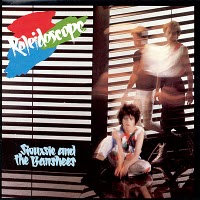 And so the Banshees effectively start over, with a new drummer (Budgie), new guitarist (John McGeoch), and a new sound. They keep the heart of darkness that was at the core of The Scream, but swap the constant jittery guitar and fractured beat for something sleeker, stranger, more expansive and greater. Put it this way: if the first two albums were grainy black-and-white, Kaleidoscope is a big-screen epic in glorious technicolor. The band absorbs elements that would have seen out of place just a year earlier: the acoustic guitars of “Christine”, the keyboards of “Happy House”, the swirling psychedelic feel to much of the record. Yet the Banshee’s signature sounds — Siouxsie’s emphatic vocals and Steven Severin’s flowing bass — are at the core of the album. A triumph, yet they would make even greater records down the track. –Brad
And so the Banshees effectively start over, with a new drummer (Budgie), new guitarist (John McGeoch), and a new sound. They keep the heart of darkness that was at the core of The Scream, but swap the constant jittery guitar and fractured beat for something sleeker, stranger, more expansive and greater. Put it this way: if the first two albums were grainy black-and-white, Kaleidoscope is a big-screen epic in glorious technicolor. The band absorbs elements that would have seen out of place just a year earlier: the acoustic guitars of “Christine”, the keyboards of “Happy House”, the swirling psychedelic feel to much of the record. Yet the Banshee’s signature sounds — Siouxsie’s emphatic vocals and Steven Severin’s flowing bass — are at the core of the album. A triumph, yet they would make even greater records down the track. –Brad
Kate Bush “Hounds of Love” (1985)
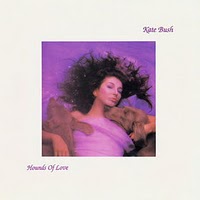 Albums that take you into another world never seem to have the adorable pop structures our ears need to play them as much as we’d like to. Kate Bush solved this by breaking the album into two sides, suiting both. Before you know it, it’s one and the same. There isn’t a more comforting voice in the world than Kate Bush’s, as far as I’m concerned. From the vivid opening trio to the down right moving “Hello Earth”, it’s amazing to contemplate Bush did this all on her own in her studio. The word genius gets flung around so often in music culture, but listening to Hounds of Love front to back there isn’t another word that seems more appropriate. It’s not about single-handedly inspiring every female musician to come or making some great songs, it’s about making one of the most strangest, complete, moving albums ever made that takes you into a different world every time and yet has you humming when you return back to your home in the city. –Allistair
Albums that take you into another world never seem to have the adorable pop structures our ears need to play them as much as we’d like to. Kate Bush solved this by breaking the album into two sides, suiting both. Before you know it, it’s one and the same. There isn’t a more comforting voice in the world than Kate Bush’s, as far as I’m concerned. From the vivid opening trio to the down right moving “Hello Earth”, it’s amazing to contemplate Bush did this all on her own in her studio. The word genius gets flung around so often in music culture, but listening to Hounds of Love front to back there isn’t another word that seems more appropriate. It’s not about single-handedly inspiring every female musician to come or making some great songs, it’s about making one of the most strangest, complete, moving albums ever made that takes you into a different world every time and yet has you humming when you return back to your home in the city. –Allistair
Angel “Angel” (1975)
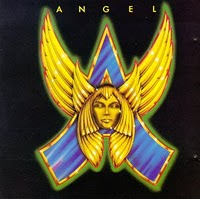 With their matching white outfits, immaculately coiffed locks, and over the top stage presence, Angel were a band ready to take the technicolor seventies by storm, and their ’75 debut easily ranks high among the greats of the decade’s American pomp ‘n’ rollers. With the heavenly helium-fueled vocals of Frank DiMino, crunchy axework of poutin’ Punky Meadows, and Greg Giuffra’s laser-blasting synths, there’s nothing shy or restrained about the Angel sound. Angel leads off with a pair of 7 minute epics in the fantasy chronicle “The Tower” and plaintive “Long Time,” before kicking into the stage-stormin’ “Rock and Rollers.” The heavy groove of “Broken Dreams,” dramatic ballad “Mariner,” king sized riffs of “Sunday Morning” and heroic “On and On” keep side two moving, and the band bids farewell with the brief instrumental, “Angel (Theme).” Not unlike Styx, a band who took the same formula to greater success, Angel deftly walk the tightrope bridging grandiosity and heaviosity throughout this stellar set. –Ben
With their matching white outfits, immaculately coiffed locks, and over the top stage presence, Angel were a band ready to take the technicolor seventies by storm, and their ’75 debut easily ranks high among the greats of the decade’s American pomp ‘n’ rollers. With the heavenly helium-fueled vocals of Frank DiMino, crunchy axework of poutin’ Punky Meadows, and Greg Giuffra’s laser-blasting synths, there’s nothing shy or restrained about the Angel sound. Angel leads off with a pair of 7 minute epics in the fantasy chronicle “The Tower” and plaintive “Long Time,” before kicking into the stage-stormin’ “Rock and Rollers.” The heavy groove of “Broken Dreams,” dramatic ballad “Mariner,” king sized riffs of “Sunday Morning” and heroic “On and On” keep side two moving, and the band bids farewell with the brief instrumental, “Angel (Theme).” Not unlike Styx, a band who took the same formula to greater success, Angel deftly walk the tightrope bridging grandiosity and heaviosity throughout this stellar set. –Ben
Santana “Welcome” (1973)
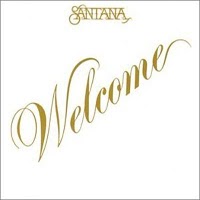 Welcome stands between two popular Santana LPs, Caravanserei and Borboletta, and it’s perhaps the most underrated Santana album. Like the previous LP, Welcome has a recording sound which can easily match today’s standards. This band had it all. The album opens with an instrumental meditation dominated by Alice Coltrane’s organ sound. The first highlight is Samba de Sausalito with a marvelous undercurrent of percussion and a good e-piano solo by Tom Coster. The next song, When I Look Into Your Eyes is a light Pop tune greatly upvalued by Joe Farrell’s lovely flute solo and the band’s accompaniment and the adventurous production: Leon Thomas uses his yodel as a sound effect and Richard Kermode comes in with a super-funky keyboard riff on which the song fades out. Next is one of my all-time Santana favorites, Yours Is The Light featuring Flora Purim, a Brazilian rhythm, Leon Thomas’ whistling and a very disciplined yet inspired solo by Carlos himself. Side Two starts with another great instrumental, Mother Africa recalling Earth, Wind & Fire’s Head To The Sky from the same year, Coltrane (Jules Brussard’s soprano solo) and McCoy Tyner. Light Of Life evokes the atmosphere of Gato Barbieri’s soundtrack, Last Tango In Paris. And now, the most ambitious instrumental piece on the set, Flame-Sky introducing John McLaughlin. In the face of this guitar giant, however, Carlos does not shy away, he opens with a typical yet inspired solo; the band shows they hold up to any challenge and finally, the Mahavishnu does what he does so well until they duet. The title song closes the circle of this marvelous LP in a quiet way with a meditation. A fantastic LP from beginning to end. The sound engineer can’t be praised too high. Welcome sounds as good today as it sounded back then, a musical adventure and one of the best Rock albums of the 70s. –Yofriend
Welcome stands between two popular Santana LPs, Caravanserei and Borboletta, and it’s perhaps the most underrated Santana album. Like the previous LP, Welcome has a recording sound which can easily match today’s standards. This band had it all. The album opens with an instrumental meditation dominated by Alice Coltrane’s organ sound. The first highlight is Samba de Sausalito with a marvelous undercurrent of percussion and a good e-piano solo by Tom Coster. The next song, When I Look Into Your Eyes is a light Pop tune greatly upvalued by Joe Farrell’s lovely flute solo and the band’s accompaniment and the adventurous production: Leon Thomas uses his yodel as a sound effect and Richard Kermode comes in with a super-funky keyboard riff on which the song fades out. Next is one of my all-time Santana favorites, Yours Is The Light featuring Flora Purim, a Brazilian rhythm, Leon Thomas’ whistling and a very disciplined yet inspired solo by Carlos himself. Side Two starts with another great instrumental, Mother Africa recalling Earth, Wind & Fire’s Head To The Sky from the same year, Coltrane (Jules Brussard’s soprano solo) and McCoy Tyner. Light Of Life evokes the atmosphere of Gato Barbieri’s soundtrack, Last Tango In Paris. And now, the most ambitious instrumental piece on the set, Flame-Sky introducing John McLaughlin. In the face of this guitar giant, however, Carlos does not shy away, he opens with a typical yet inspired solo; the band shows they hold up to any challenge and finally, the Mahavishnu does what he does so well until they duet. The title song closes the circle of this marvelous LP in a quiet way with a meditation. A fantastic LP from beginning to end. The sound engineer can’t be praised too high. Welcome sounds as good today as it sounded back then, a musical adventure and one of the best Rock albums of the 70s. –Yofriend
Ry Cooder “Chicken Skin Music” (1976)
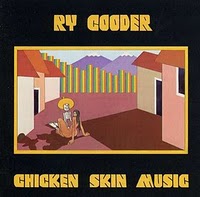 This largely acoustic set composed entirely of covers is an interesting offering from Mr Cooder and various buddies. It looks like he wanted to collaborate with musicians specializing in traditional styles of popular music. The fact that he chooses to record two songs by Leadbelly, himself one of America’s great folk musicians, reinforces this notion. The hybrid “Always Lift Him Up/Kanaka Wai Wai” brings together a wonderfully positive gospel-sounding song from West Virginia and guitar music from Hawaii. “He’ll Have to Go” features some lovely “Tex-Mex” style accordion playing that almost gives the song a french flavor. There is some sensuous Polynesian music in “Yellow Roses” and “Chloe”. It’s a clever album by someone who obviously has a deep love for and great knowledge of popular music. The singing sometimes lets the quality down a little, but the musicianship, arrangements and production are almost faultless. For sheer listening pleasure this one is hard to beat. –Jim
This largely acoustic set composed entirely of covers is an interesting offering from Mr Cooder and various buddies. It looks like he wanted to collaborate with musicians specializing in traditional styles of popular music. The fact that he chooses to record two songs by Leadbelly, himself one of America’s great folk musicians, reinforces this notion. The hybrid “Always Lift Him Up/Kanaka Wai Wai” brings together a wonderfully positive gospel-sounding song from West Virginia and guitar music from Hawaii. “He’ll Have to Go” features some lovely “Tex-Mex” style accordion playing that almost gives the song a french flavor. There is some sensuous Polynesian music in “Yellow Roses” and “Chloe”. It’s a clever album by someone who obviously has a deep love for and great knowledge of popular music. The singing sometimes lets the quality down a little, but the musicianship, arrangements and production are almost faultless. For sheer listening pleasure this one is hard to beat. –Jim
Robin Trower “Bridge of Sighs” (1974)
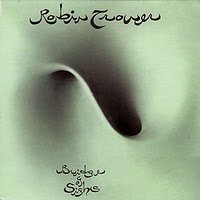 Post-Hendrix bluesy power trios have a tendency to put competency over inspiration, attempting to match Hendrix’s technique without considering his tunefulness or his essential emphasis on feel. It doesn’t take a lot of imagination or style to put out a solid blues-rock album so long as you learn your instrument and learn it well. But once in a while this form finds some unique angle to exploit. Bridge of Sighs is a case in point. Former Procol Harum guitar whiz Trower uses a bank of effects pedals to produce a swirling, oceanic sound with sustain that hangs in the air for hours: lithe and surprisingly light of touch for the music’s intensity, his style on this album should have guitarheads frothing at the mouth. Singer/bassist James Dewar is no slouch, either, sounding rather like Paul Rodgers in a lower register, and anchoring Trower’s waves of sound firmly in the blues. The title track is a wonderful, atmospheric dirge-like thing, and closer “Little Bit of Sympathy” is another standout. It’s a stylish and well produced album, Trower is a pretty amazing guitar player with a strong sense of melody and an uncanny ability to do a lot with few notes, and those whose appetite for good guitar albums is never sated should definitely pick this up. –Will
Post-Hendrix bluesy power trios have a tendency to put competency over inspiration, attempting to match Hendrix’s technique without considering his tunefulness or his essential emphasis on feel. It doesn’t take a lot of imagination or style to put out a solid blues-rock album so long as you learn your instrument and learn it well. But once in a while this form finds some unique angle to exploit. Bridge of Sighs is a case in point. Former Procol Harum guitar whiz Trower uses a bank of effects pedals to produce a swirling, oceanic sound with sustain that hangs in the air for hours: lithe and surprisingly light of touch for the music’s intensity, his style on this album should have guitarheads frothing at the mouth. Singer/bassist James Dewar is no slouch, either, sounding rather like Paul Rodgers in a lower register, and anchoring Trower’s waves of sound firmly in the blues. The title track is a wonderful, atmospheric dirge-like thing, and closer “Little Bit of Sympathy” is another standout. It’s a stylish and well produced album, Trower is a pretty amazing guitar player with a strong sense of melody and an uncanny ability to do a lot with few notes, and those whose appetite for good guitar albums is never sated should definitely pick this up. –Will
James Gang “Rides Again” (1970)
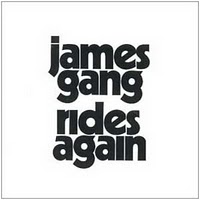 Rides Again is an interesting album. It comes at the dawn of hard rock following on the heels of the psychedelic blues rock revolution. The album itself is half hard rock, where the influence of Zeppelin can be heard, and half something else, more akin to CSN or Neil Young. The album opens in fine form with the classic blues hook, “Funk #49.” “Woman” is another great hard-rocker, followed by the experimental suite “The Bomber” containing a neat interpretation of Ravel’s “Bolero.” The second side starts off quietly. “Tend my Garden” has some of the harmonies associated with CSN. This song fades into “Garden Gate,” an acoustic piece which finds Joe Walsh asking questions. “There I Go Again” is an annoyingly catchy song which features some great pedal steel guitar from guest Rusty Young. “Ashes the Rain and I” closes the album in thoughtful, almost sad, fashion. Dale Peters plays six string on this one and orchestration is added by Jack Nitzsche. It seemed to be de rigueur for US artists of the time to have Nitzsche orchestrate something for them…still it’s tastefully done. The material on this album is very varied, surprisingly hard and, at times, surprisingly progressive. –Jim
Rides Again is an interesting album. It comes at the dawn of hard rock following on the heels of the psychedelic blues rock revolution. The album itself is half hard rock, where the influence of Zeppelin can be heard, and half something else, more akin to CSN or Neil Young. The album opens in fine form with the classic blues hook, “Funk #49.” “Woman” is another great hard-rocker, followed by the experimental suite “The Bomber” containing a neat interpretation of Ravel’s “Bolero.” The second side starts off quietly. “Tend my Garden” has some of the harmonies associated with CSN. This song fades into “Garden Gate,” an acoustic piece which finds Joe Walsh asking questions. “There I Go Again” is an annoyingly catchy song which features some great pedal steel guitar from guest Rusty Young. “Ashes the Rain and I” closes the album in thoughtful, almost sad, fashion. Dale Peters plays six string on this one and orchestration is added by Jack Nitzsche. It seemed to be de rigueur for US artists of the time to have Nitzsche orchestrate something for them…still it’s tastefully done. The material on this album is very varied, surprisingly hard and, at times, surprisingly progressive. –Jim
Judee Sill “Heart Food” (1973)
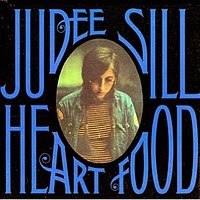 I’ve heard Joni Mitchell, and I’ve heard Laura Nyro, and without wanting to denigrate either of those fine artists, I think Judee Sill’s better than either of them. Actually, that’s not quite fair; Sill reminds me more of Brian Wilson and his “teenage symphonies to God” than either Mitchell or Nyro. Like Wilson, there’s a sense of childlike wonder to Judee; like Wilson, both talk a lot about God (and, in Sill’s case, Jesus) without being explicitly Christian; instead God is used as a name for the Other, the Muse. And, like Wilson, Sill fuses all sorts of musics — pop, soul, doo-wop, folk, “cosmic cowboy music” similar to Gene Clark’s — with an elaborate sense of orchestration to come up with something completely open, gorgeously sunny, wistfully dark and totally sensuous. In his liner notes to the CD reissue, XTC’s Andy Partridge talks about the “velvet milk” of this record, and that’s a perfect description of its plushness (but not lushness). Anyone who could hear “The Donor” and not acclaim its composer as a pop genius doesn’t deserve a record player. You can, charitably, see why it didn’t sell in 1973: just too damn individual and demanding a listen. Then again, Pet Sounds didn’t sell either. –Brad
I’ve heard Joni Mitchell, and I’ve heard Laura Nyro, and without wanting to denigrate either of those fine artists, I think Judee Sill’s better than either of them. Actually, that’s not quite fair; Sill reminds me more of Brian Wilson and his “teenage symphonies to God” than either Mitchell or Nyro. Like Wilson, there’s a sense of childlike wonder to Judee; like Wilson, both talk a lot about God (and, in Sill’s case, Jesus) without being explicitly Christian; instead God is used as a name for the Other, the Muse. And, like Wilson, Sill fuses all sorts of musics — pop, soul, doo-wop, folk, “cosmic cowboy music” similar to Gene Clark’s — with an elaborate sense of orchestration to come up with something completely open, gorgeously sunny, wistfully dark and totally sensuous. In his liner notes to the CD reissue, XTC’s Andy Partridge talks about the “velvet milk” of this record, and that’s a perfect description of its plushness (but not lushness). Anyone who could hear “The Donor” and not acclaim its composer as a pop genius doesn’t deserve a record player. You can, charitably, see why it didn’t sell in 1973: just too damn individual and demanding a listen. Then again, Pet Sounds didn’t sell either. –Brad
Led Zeppelin “Led Zeppelin III” (1970)
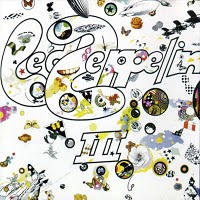 I always gauge a professed Led Zep fan by their attitude to this record. If they say they find it weak, boring, soft, folky, then you pretty much say they’re fairweather friends who just want the hammer to drop, and would be much more at home with Black Sabbath or Uriah Heep. Fact is, Led Zep’s folk (and world music) inclinations weren’t some sort of add-on bonus; folk is at the heart of what the band is all about. Just listen to the first two records, which boast “Babe I’m Gonna Leave You”, “Black Mountain Side” (a straight retread of Bert Jansch’s “Black Waterside”), “Ramble On”, “Thank You”, “Your Time Is Gonna Come” and even “What Is And What Should Never Be”. In each of these songs, Celtic folk is a crucial element. Essential to Zeppelin, too, is the sense of mystery that comes from the folk tradition, the sense of the past in the present, that the otherworld (whether it be the supernatural or the Christian tradition) is just around the corner — what Bob Dylan once summed up affectionately as “songs about death and vegetables”. (And I’m reminded it was Dylan who informed us that “mystery is a fact”.)
I always gauge a professed Led Zep fan by their attitude to this record. If they say they find it weak, boring, soft, folky, then you pretty much say they’re fairweather friends who just want the hammer to drop, and would be much more at home with Black Sabbath or Uriah Heep. Fact is, Led Zep’s folk (and world music) inclinations weren’t some sort of add-on bonus; folk is at the heart of what the band is all about. Just listen to the first two records, which boast “Babe I’m Gonna Leave You”, “Black Mountain Side” (a straight retread of Bert Jansch’s “Black Waterside”), “Ramble On”, “Thank You”, “Your Time Is Gonna Come” and even “What Is And What Should Never Be”. In each of these songs, Celtic folk is a crucial element. Essential to Zeppelin, too, is the sense of mystery that comes from the folk tradition, the sense of the past in the present, that the otherworld (whether it be the supernatural or the Christian tradition) is just around the corner — what Bob Dylan once summed up affectionately as “songs about death and vegetables”. (And I’m reminded it was Dylan who informed us that “mystery is a fact”.)
So. Led Zeppelin III. Written and recorded, not in a frenzy of activity, as the first two albums had been, but in a more relaxed frame of mind, with Plant and Page actually decamping to Bron-Y-Aur, a small cottage in rural Wales, to write together. No wonder, then, that this is a mellower album than its predecessors. Not that you’d know it when you drop the needle on the record. “Immigrant Song” explodes into being, with Plant’s wail initiating us into the new world. The first two albums had begun with songs about sex; this one is about a mythical past, with Plant taking on the persona of a Viking warrior, ready to meet his companions in Valhalla (that is, in death). All hitched to one of the most brutal riffs this side of “Black Dog”. And then it’s over. Can it really be only two minutes’ long? It feels like we’ve glimpsed an entire world in that time.
Sometimes seen as just that record between the hard rock milestones of II and the self titled fourth album, it’s much more than that. In a way, it’s the culmination of the journey undertaken on the first two records, as well as the beginning of a new one that will last for the rest of the band’s career. Put simply, all the branches Zep will follow from now on can be traced to the seeds laid on III, whether it’s the orchestral majesty of “Kashmir” (with its template of “Friends”), the medieval tone to “No Quarter” or “The Battle Of Evermore”, or the slow burners of “Stairway” or “In My Time Of Dying”. Idiot American reviewers sometimes claim that with this album Zep were trying to jump on the Crosby, Stills & Nash soft rock bandwagon, yet a quick look at the English scene of 1969-70 shows that Zeppelin’s influences were Pentangle, Fairport Convention (compare III with Liege And Lief) and even Nick Drake. Actually, “influences” may be the wrong word; like any great band Zeppelin simply tied into the zeitgeist of the times, and discovered that its strains ran deep in its own DNA. –Brad


